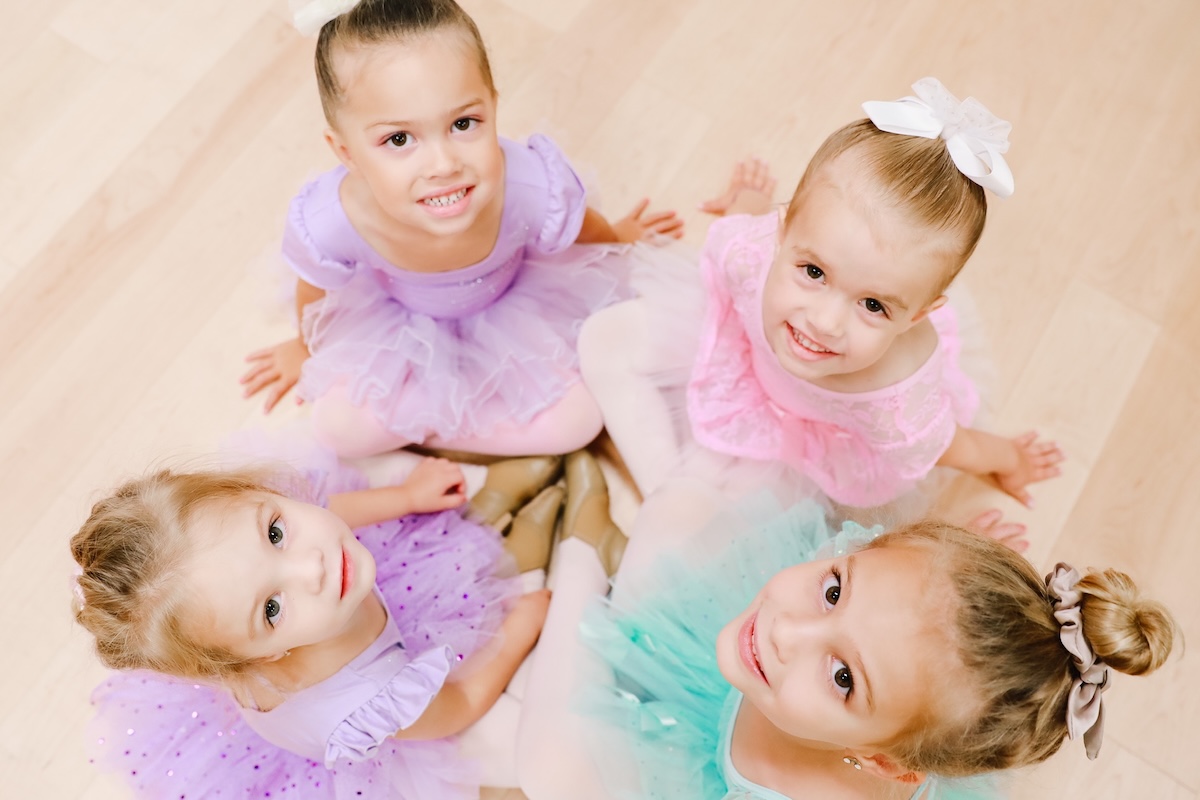
Dance transcends words – and for many kids, it is a great way to express feelings and nurture emotional growth.
Beyond dance’s artistic and physical benefits, it’s also been increasingly recognized for its therapeutic potential, particularly in supporting emotional health.
Participating in dance classes can be a transformative experience for young people as they navigate big emotions, build resilience, and improve overall mental health.
The Emotional Benefits of Dancing
Through movement, dancers can explore their emotions, release bottled-up feelings, and gain a deeper understanding of themselves.
Some of the emotional benefits of dancing include:
Emotional Expression
Dance provides a nonverbal outlet for expressing emotions. For children who may struggle to articulate their feelings with words, movement can become a valuable means of communication. Through dance, they can explore and express their emotions in a creative and safe space.
Stress Relief
Engaging in dance helps release tension and stress stored in the body. The physical act of dancing, along with the joy of movement, allows children to experience a release of stress, which can help calm the mind and reduce anxiety.
Mood Boosts
Dance is known to elevate mood by encouraging the production of endorphins, the body’s natural “feel-good” hormones. This mood-enhancing effect can make dance a wonderful way to uplift spirits and encourage a positive outlook.
Emotional Resilience
Participating in dance allows children to explore and confront their emotions within a supportive environment. Over time, this practice helps build emotional resilience, enabling them to cope more effectively with life’s challenges and recover from setbacks with greater ease.
Self-Awareness
Through dance, children can gain a deeper awareness of their emotions and how these emotions manifest physically. This heightened self-awareness fosters mindfulness and helps them navigate their emotional needs more intentionally.
How Dancing Contributes to Emotional Development
How can dancing lessons be beneficial for children? Dance plays a significant role in emotional development, particularly in kids.
It offers a dynamic environment where children can explore their emotions, develop social skills, and build self-confidence.
Self-Expression
Dance provides an outlet for kids to express their emotions in a creative and uninhibited way. Whether they are feeling happy, frustrated, or excited, dance allows them to channel these emotions into movement, fostering a healthy outlet for self-expression.
Confidence
As children learn new dance moves and routines, they foster a sense of accomplishment and a sense of pride in their abilities. Performing in front of peers or an audience further boosts their confidence and self-esteem, which are crucial components of emotional development.
Social Skills
Dance classes often involve group activities that require collaboration and interaction with others. These social interactions help children develop empathy, learn to communicate clearly and get to know the importance of teamwork.
Emotional Regulation
Dance can help kids identify, safely express, and process their emotions in a positive way as they experience life’s ups and downs.
Mental and Emotional Benefits of Dance Class
In dance class, fun is just the beginning. Yes, kids have a great time during dance lessons, but they also leave with other benefits.
Cognitive Function
Dance requires mental focus, memory, and coordination, which help sharpen the cognitive skills of growing minds. Learning choreography challenges the brain and improves mental agility.
Increased Mindfulness
Dance encourages mindfulness by requiring participants to be present in the moment as they focus on their movements, breathing, and music.
This mindfulness can carry over into other areas of life, including how kids manage stressful situations in school or with friends.
Stress Relief
Rhythmic and repetitive dance steps can be soothing and help reduce stress. Dance provides a healthy outlet for releasing tension and stress.
Improved Self-Esteem
As kids work to improve their dance skills, they often experience a boost in self-esteem. The sense of achievement that comes with mastering new moves or routines contributes to a positive self-image.
Social Connection
Dance classes build a sense of community and belonging. They also encourage kids to hone their interpersonal skills as they get to know fellow dancers and work together toward their goals.
Creativity and Self-Expression
Dance empowers kids to express themselves creatively and enjoy the emotional freedom that expression creates. The opportunity to explore and communicate emotions through movement contributes to greater emotional depth and self-awareness.
By integrating lessons from the dance studio into their lives, younger dancers can lead happier, healthier, and more balanced lives.
Sign Up for Dance Classes
At America’s Kids In Motion, our dance lessons in Clovis, California, foster a safe, fun environment where kids can express themselves.
We accommodate dance students as young as toddlers all the way up through advanced pre-professional students.
Contact America’s Kids In Motion today to learn more about our dance curriculum and register for lessons.




